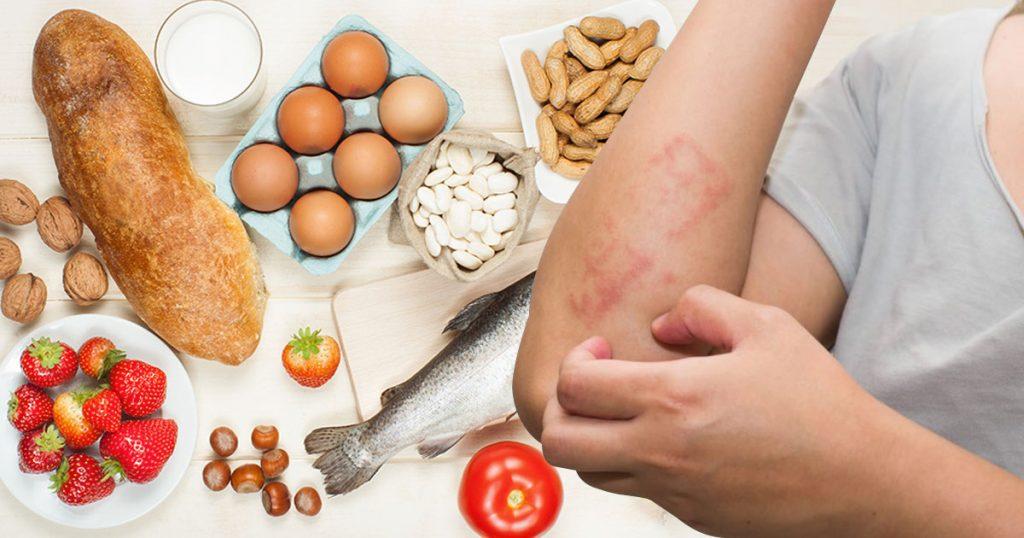Angioedema causes deep skin and membrane swelling due to factors like genetics, autoimmune issues, heart problems, allergies, and food triggers. Certain foods, like tree nuts, and medications, such as NSAIDs, can set off allergic attacks. We’ll discuss managing these triggers and what foods to avoid with angioedema.
What is angioedema?
Angioedema is a condition where deep swelling happens under the skin and in tissues like the throat, tongue, hands, and feet. It can also affect the digestive tract or airways, leading to belly pain and trouble breathing. Things like autoimmune issues, drug reactions, infections, insect bites, or allergies to food, meds, or the environment can trigger it. There are different kinds of angioedema, including ones caused by allergies, reactions to drugs, or genetic factors.
Types of Angioedema
- Hereditary Angioedema: This type of angioedema runs in families. It causes swelling but is not due to an allergy.
- Allergic Angioedema: This happens when your body reacts to something it’s allergic to, like food or medicine, causing swelling.
- Idiopathic Angioedema: Idiopathic means the cause is unknown. So, this type of angioedema appears without a clear reason.
Common Symptoms of Angioedema
- Skin or inner tissue swelling
- Itching and redness
- Swelling of lips, eyes, hands, or feet
- Belly cramps or stomach pain
- Hard time breathing or swallowing
- Low blood pressure
- How to Manage Foods that Trigger Angioedema
To avoid angioedema episodes, be careful with what you eat and go on an angioedema diet. Here are some tips:
Understanding Food Allergies and Intolerances
- Figuring out if it’s a food allergy or just not getting along with certain foods
- Finding out which foods usually cause problems
- Steer clear from foods that might make you have an allergic reaction or not feel well
Determining Specific Food Triggers
Watch out for these common triggers:
- Tree Nuts: Be careful with almonds, walnuts, and cashews—they can cause angioedema.
- Food Additives: Some preservatives and sweeteners may trigger allergies. Check labels and skip foods with these additives.
- Green Salad Ingredients: Watch out for swelling after eating spinach or arugula. Avoid it if it triggers angioedema.
- NSAIDs: Pain relievers like aspirin or ibuprofen can worsen symptoms. Ask your doctor about other options.
- Spicy Foods: Chili peppers or hot sauces might cause swelling. Tone down spices or skip them.
- Alcohol: Some people react to alcohol with angioedema. Consider avoiding it if it causes symptoms.
Safe and Alternative Food Options
- Fresh Fruits and Veggies: Pick fruits and veggies like apples, pears, carrots, and cucumbers that don’t usually cause angioedema.
- Lean Proteins: Go for chicken, fish, or tofu—they’re less likely to trigger allergies or swelling.
- Whole Grains: Eat brown rice, quinoa, or oats for a healthy, safe choice.
- Stay Hydrated: Drink enough water every day to lower the chances of angioedema episodes.
Work with a Specialist
When going on any type of diet and selecting various edema foods to avoid, you should always seek professional advice:
- See an Allergy Specialist: Talk to a doctor who knows about allergies and immune system issues for personalized help with angioedema.
- Keep a Food Journal: Write down what you eat and any symptoms. It can help you find triggers and talk better with your doctor.
How is angioedema diagnosed?
To find out what’s causing angioedema and what triggers it, different tests can be done, such as:
Skin Prick and Patch Tests
These tests check for reactions by putting tiny bits of allergens on your skin. They can find out if you’re allergic to certain foods that might cause angioedema.
Medical History and Physical Examination
Your doctor will ask about your past health and do a careful check-up to understand your symptoms and what might be causing them.
Relevant Trigger Factor Tests
If a specific trigger factor is suspected, like a medicine or food ingredient, to be causing your symptoms, they might do special tests to check.
Blood Tests and Samples
Your doctor might take a small sample of your blood to check for certain things, like antibodies or other substances that could be causing your swelling. This can also help find any other health problems that might be linked to angioedema.
Can angioedema be managed without medication?
Sometimes, you might need medicine for angioedema, but changing what you eat and staying away from foods that cause it can also help.
Certain foods can make angioedema worse, so it’s important to know which ones to avoid. Your doctor can help you figure out what triggers your swelling and what you should stay away from. By making changes to your diet and steering clear of these trigger foods, you can better manage your angioedema.
Take Extra Precautions by Knowing What Foods to Avoid with Angioedema
Make sure you’re taking care of yourself! If you’re dealing with angioedema, talk to your doctor about your symptoms and what might be causing them. Together, you can figure out the best way to manage your condition, whether it’s through medication, dietary changes, or avoiding trigger foods. Remember, understanding your body and making small adjustments can make a big difference in how you feel. Don’t hesitate to seek help and take control of your health!
